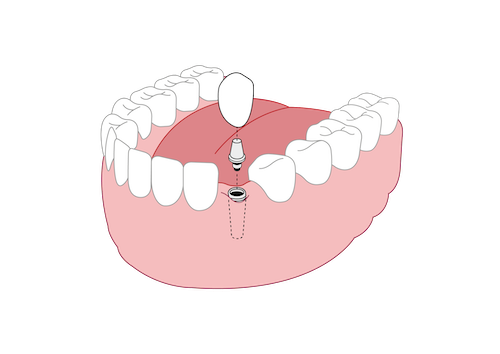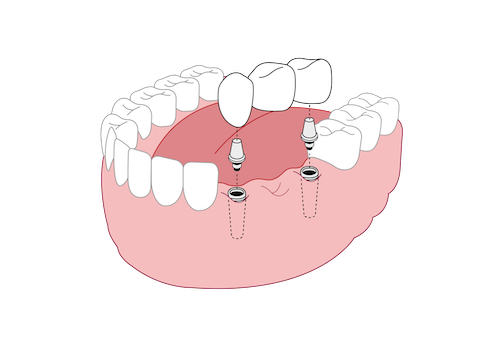7
Keep smiling with dental implants
A dental implant is placed directly into the jawbone and a titanium screw acts like the root of a tooth. You can have any number of teeth replaced with implants as long as your bone condition allows for implant replacement. A crown can be cemented or screwed to the implant, or implants can be used to support a bridge or denture.
|
Image
 |
Image
 |
When/why should you choose this option?
- Dental implants can replace one or more teeth.
- The bone in your jaw should be strong and healthy to support the implants. If that is not the case, it may not be possible to place implants without grafting bone into the area first, making the procedure more complex.
- The results are, generally, predictable in most people and achieve a high level of patient satisfaction.
- They can produce a good aesthetic result when planned and carried out effectively.
- If your implants are looked after properly, you can expect them to last for many years.
What do you need to be aware of?
- The most serious complication of dental implant surgery is injury to the nerves in the jaw.
- Dental implants can lead to problems in the soft tissue or bone around the implants. Your dentist will call this: peri-implant disease. It is caused by bacteria build-up around the base of the dental implant and along the gum line; those with gum disease elsewhere in the mouth are at greater risk.
- You may have a higher risk of dental implant failure if you have diabetes, particularly if the disease is poorly controlled.
- Smoking also affects the success, health and durability of implants.
- Mechanical complications include cement failure, screws loosening and fracturing of the porcelain crowns, as well as implant fracture.
- Natural teeth change colour with age, which can make them look different to the restored teeth over time.
What will you need to do to improve your chance of long-term success?
- Brush your teeth twice a day with a toothpaste containing at least 1,100 ppm fluoride if your risk of dental caries is low.
- Use dental floss and/or interdental brushes to clean between your teeth.
- Eat a well-balanced diet that is low in sugar.
- Your dentist will assess your risk and need for periodic review. This might be between 3-12 months depending on his/her recommendation.
What if there are problems?
- There may be different solutions available, according to your individual situation and problem. For example:
- if you develop peri-implant disease, your dentist may be able to treat it as it occurs;
- if your dental implant has a mechanical failure, it may be repaired or replaced;
- if you have recurring problems, your dentist may suggest an alternative option, such as an implant-supported overdenture (a removable denture combined with implants);
- if there is a mismatch in colour between your natural and artificial teeth, whitening the natural teeth may be the easiest solution if your natural teeth respond to whitening.
- In some instances, removal of the implants may be necessary. If this is the case, you and your dentist can agree on the best plan of care for you.
What other factors do we need to consider?
- Invasiveness of procedure: Dental implants require oral surgery. However, there’s no need to anchor implants to other teeth; therefore, your natural teeth are not affected.
- Treatment fees: Extensive dental implant treatment can be expensive.
How does this option affect you?
Dental implants can help improve your quality of life by offering a natural and secure option, both when used on their own, or to support a bridge or denture.